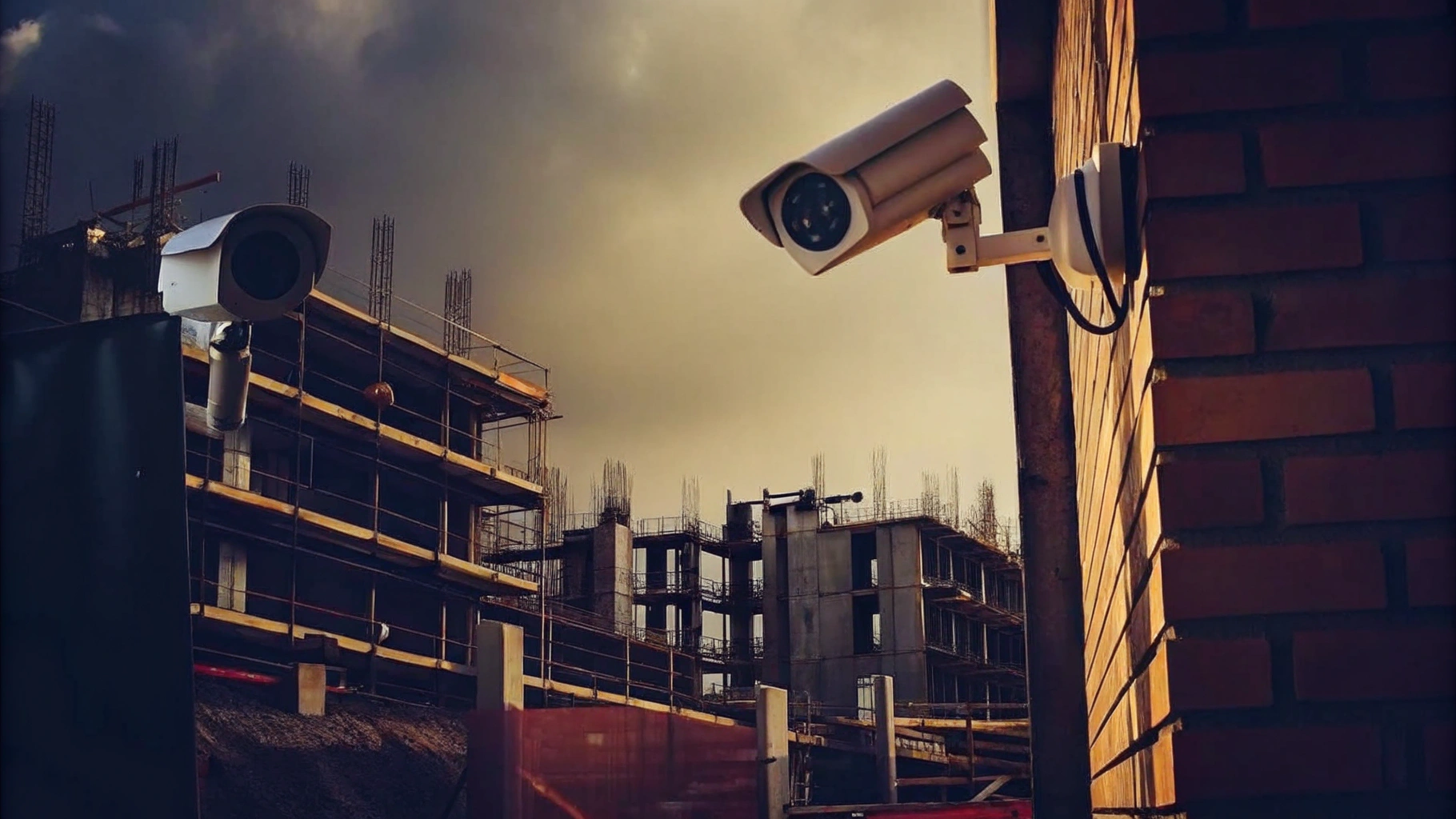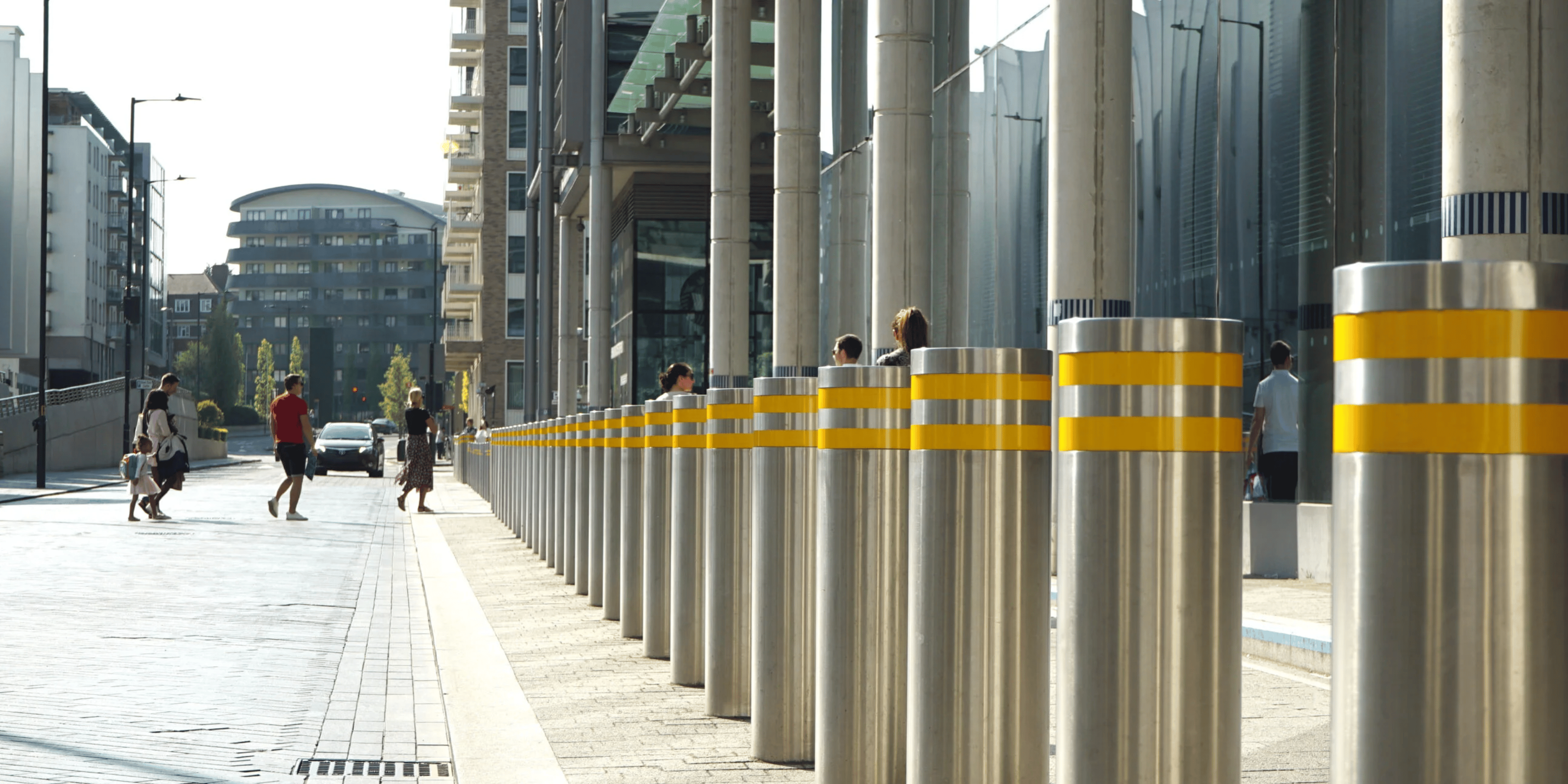
4 Best Practices for Electronic Security Systems in Construction

Overview
The article presents four best practises for implementing electronic security systems in construction:
- Effective risk assessment
- Advanced technology integration
- Continuous monitoring
- Evaluation strategies
These practises play a crucial role in mitigating theft and enhancing safety on construction sites. Case studies illustrate that comprehensive security measures lead to significant reductions in theft occurrences, highlighting the importance of prioritising security within the broader context of business resilience.
Introduction
The construction industry faces significant challenges, with over 11,000 reported thefts annually in the UK. This reality highlights the urgent need for effective electronic security systems. These systems not only protect valuable materials but also enhance site safety and compliance. As construction projects become increasingly complex, companies must consider how to integrate advanced security solutions to safeguard their assets and operations.
Ignoring these security risks can have severe consequences—financial losses, operational disruptions, and reputational damage. The lesson is clear: proactive measures are essential. Priority First offers pragmatic solutions that focus on long-term value rather than quick fixes, ensuring that construction sites are not only secure but also resilient.
By exploring best practises in electronic security systems, businesses can implement strategies that mitigate risks and foster a culture of continuous improvement. Investing in robust security measures today can prevent greater losses tomorrow, making it a vital component of business continuity.
Understand the Importance of Electronic Security Systems in Construction
Electronic security systems are essential in the building sector, primarily due to the substantial value of materials and equipment often left unmonitored on-site. These electronic security systems serve a dual purpose: they deter theft and vandalism while enhancing safety by monitoring access points and ensuring compliance with health and safety regulations.
The reality is that in 2025, the UK building industry faces a troubling scenario, with over 11,000 reported thefts annually and an estimated total cost of theft in the sector exceeding £1 billion. A building project lacking adequate electronic security systems risks significant financial setbacks, which can lead to delays and increased costs. Theft disrupts timelines, resulting in idle workforces and emergency hires for replacement equipment, thereby straining budgets.
Furthermore, electronic security systems play a vital role by providing real-time information crucial for incident response and risk management, making them indispensable for modern construction projects.
Priority First focuses on integrating its offerings with existing protection systems, ensuring that your site is under constant surveillance and that any suspicious activity is promptly addressed. As Anna Edwards observes, 'Construction theft is no longer merely an inconvenience.' It is a daily operational and financial risk confronting companies across the UK.
That said, as the complexity of criminal tactics evolves, adopting advanced electronic security systems from Priority First is vital for safeguarding assets and ensuring operational continuity.

Select and Integrate Effective Electronic Security Solutions
Selecting electronic security systems necessitates a meticulous risk assessment to identify vulnerabilities unique to each construction site. Effective strategies typically encompass electronic security systems, including high-definition CCTV setups, access control devices, and alarm solutions. For example, integrating electronic security systems such as a CCTV system with motion detection capabilities provides extensive surveillance coverage, while access control ensures that only authorised personnel can enter sensitive areas. This integration must be seamless, facilitating centralised monitoring and management, which significantly enhances overall safety effectiveness.
A notable case study from a prominent construction project in Chelsea, London, demonstrated how Priority First implemented a multi-layered safety strategy, incorporating key holding, CCTV monitoring, and logistics management. This approach resulted in a remarkable reduction in theft occurrences by over 40%. Moreover, educating personnel about risk awareness is crucial to ensure that everyone understands their role in maintaining site safety, further bolstering the overall protective posture.
The Building Safety Act 2025 introduces a digital 'golden thread' of safety information, expected to include location safety records, underscoring the importance of integrating protective measures within the broader safety framework. By prioritising these strategies, businesses can mitigate risks effectively, ensuring a resilient operational environment.

Leverage Advanced Technology for Enhanced Security Management
Cutting-edge technologies, particularly AI-powered monitoring tools and predictive analytics, along with electronic security systems, are reshaping safety management on construction sites. Intelligent electronic security systems, which feature automated threat detection, deliver real-time alerts to monitoring personnel regarding suspicious activities, facilitating immediate intervention. Additionally, behavioural analysis software enhances this capability by recognising patterns that may indicate potential threats. For instance, AI-driven drones are increasingly utilised for aerial monitoring, offering comprehensive assessments of the area and swiftly identifying unauthorised access or safety hazards. By integrating electronic security systems, building firms not only bolster safety but also streamline operations, significantly reducing response times to incidents.
In conjunction with these technological advancements, implementing Hostile Vehicle Mitigation (HVM) strategies is crucial for construction sites, where vehicle threats pose significant risks. HVM involves establishing physical measures such as barriers and bollards to prevent vehicles from being used as weapons, thereby enhancing the overall security of the area. At Priority First, we provide tailored physical protection services and electronic security systems that include the installation of these measures, ensuring a comprehensive approach to safety at the site.
The deployment of predictive analytics enables proactive risk management, ensuring that potential threats are identified and addressed before they escalate, ultimately fostering a safer and more efficient work environment. Moreover, companies that utilise AI surveillance have reported savings of up to £80,000 in claim-related losses, further highlighting the financial advantages of these advanced technologies. At Priority First, we emphasise the importance of a coordinated strategy that integrates both advanced technology, including electronic security systems, and skilled personnel, guaranteeing thorough protection for construction sites.

Implement Continuous Monitoring and Evaluation Strategies
To maintain a robust protective stance, building locations must implement ongoing monitoring and assessment strategies through electronic security systems. This involves:
- Regularly reviewing surveillance footage
- Analysing incident reports
- Conducting thorough site audits to identify weaknesses in the protection framework
The reality is that Priority First has effectively executed comprehensive building audits and risk evaluations, enabling firms to recognise and resolve deficiencies in access control protocols, which has led to substantial decreases in unauthorised access occurrences.
Moreover, with more than 11,000 theft occurrences documented each year in the construction sector, utilising data analytics can predict possible weaknesses in electronic security systems by analysing past data, allowing for proactive modifications to safety measures.
Priority First's AI CCTV solutions can autonomously monitor live video feeds to identify hazardous practises and unauthorised entries, enhancing the effectiveness of these strategies.
That said, adherence to local privacy regulations is essential when employing AI monitoring, guaranteeing that protective measures are both efficient and accountable.
Cultivating a culture of continuous improvement ensures that security systems adapt to emerging threats, thereby enhancing overall site safety and compliance with industry standards.

Conclusion
Implementing effective electronic security systems in construction is not merely a precaution; it is essential for safeguarding valuable assets and ensuring operational efficiency. The reality is that these systems play a critical role in deterring theft, enhancing safety, and maintaining compliance with industry regulations. As the construction sector encounters increasing risks, integrating advanced security technologies becomes paramount to protect both physical assets and personnel.
Key strategies include:
- Selecting tailored security solutions based on thorough risk assessments
- Leveraging cutting-edge technologies like AI and predictive analytics
- Establishing continuous monitoring protocols
These practises mitigate risks and foster a culture of safety and vigilance across construction sites. The evidence is clear: adopting these best practises yields tangible benefits, emphasising the importance of proactive measures in an industry beset by theft and safety challenges.
In practise, the construction industry must embrace these electronic security best practises to navigate the evolving landscape of risks and challenges. By prioritising robust security measures, companies can safeguard their investments and contribute to a safer working environment for all stakeholders involved. The lesson is clear; investing in comprehensive electronic security systems is not merely an expense but an investment in the future resilience of construction.
Frequently Asked Questions
Why are electronic security systems important in construction?
Electronic security systems are crucial in construction because they deter theft and vandalism while enhancing safety by monitoring access points and ensuring compliance with health and safety regulations.
What is the estimated cost of theft in the UK building industry?
The estimated total cost of theft in the UK building industry exceeds £1 billion annually, with over 11,000 reported thefts each year.
What impact does theft have on construction projects?
Theft can lead to significant financial setbacks, delays, idle workforces, and the need for emergency hires for replacement equipment, ultimately straining project budgets.
How do electronic security systems aid in incident response and risk management?
Electronic security systems provide real-time information that is crucial for incident response and risk management, making them essential for modern construction projects.
What approach does Priority First take regarding electronic security systems?
Priority First focuses on integrating its offerings with existing protection systems to ensure constant surveillance of construction sites and prompt addressing of any suspicious activity.
How has the nature of construction theft changed according to industry experts?
Experts like Anna Edwards note that construction theft is now viewed as a daily operational and financial risk rather than just an inconvenience.
Why is it important to adopt advanced electronic security systems?
It is vital to adopt advanced electronic security systems to safeguard assets and ensure operational continuity, especially as criminal tactics become more complex.




